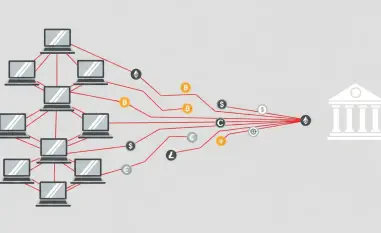I’m thrilled to sit down with Malik Haidar, a renowned cybersecurity expert with years of experience safeguarding multinational corporations from sophisticated cyber threats. With a deep background in analytics, intelligence, and security, Malik has a unique ability to blend technical expertise with business strategy, making him a trusted voice in the fight against digital adversaries. Today, we’re diving into the alarming activities surrounding the Ukrainian network FDN3, exploring the intricacies of brute-force attacks, the shadowy world of bulletproof hosting, and the broader challenges of tackling cybercrime infrastructure.
Can you break down what the Ukrainian network FDN3 is and why it’s raising red flags in the cybersecurity community?
FDN3, or AS211736, is a Ukraine-based autonomous system that has recently been identified as a hub for large-scale malicious activities. Cybersecurity researchers have flagged it for launching massive brute-force and password spraying campaigns targeting critical infrastructure like SSL VPN and RDP devices. What’s concerning is not just the scale but the coordination behind these attacks, which suggest a well-organized effort to compromise corporate networks. This isn’t just a random actor; it’s part of a broader abusive infrastructure that’s designed to evade detection and persist in its operations.
What are brute-force and password spraying attacks, and how is FDN3 using these tactics?
Brute-force attacks involve repeatedly trying different username and password combinations until one works, essentially hammering at a door until it breaks. Password spraying, on the other hand, is a bit more subtle—it uses a single password across many accounts to avoid triggering lockout mechanisms. FDN3 has been deploying both techniques to target SSL VPN and RDP devices, which are often entry points into corporate networks. By focusing on these systems, they’re aiming to gain unauthorized access to sensitive environments, potentially for data theft or ransomware deployment.
How do these attacks connect to other networks, and what’s the significance of those relationships?
FDN3 isn’t operating in isolation. It’s linked to other Ukrainian networks like VAIZ-AS and ERISHENNYA-ASN, as well as a Seychelles-based network called TK-NET. These networks, all allocated around the same time in 2021, often exchange IP prefixes to dodge blocklisting efforts. This kind of collaboration allows them to shift their malicious activities across different infrastructures, making it incredibly hard to pin them down. It’s a game of digital whack-a-mole, where blocking one IP range just pushes the activity to another.
Can you explain the role of bulletproof hosting services in this context and why they’re so problematic?
Bulletproof hosting services are providers that turn a blind eye to illegal activities hosted on their infrastructure, often offering anonymity and protection from takedowns. In the case of FDN3 and its associated networks, these services—often fronted by shell companies in offshore locations like Seychelles—provide the backbone for malicious operations. They enable everything from spam distribution to malware hosting and brute-force attacks. The problem is that their offshore nature and lax oversight make it nearly impossible to hold them accountable or shut them down effectively.
What does the use of offshore locations like Seychelles mean for tracking and stopping these networks?
Offshore locations like Seychelles offer a veil of anonymity that’s incredibly appealing to malicious actors. These jurisdictions often have weak regulations or limited cooperation with international law enforcement, which means the owners of these networks can hide their identities and avoid legal repercussions. For cybersecurity professionals, it’s a frustrating barrier because even when we identify the infrastructure, tracing it back to an actual person or entity becomes a logistical nightmare. It’s a deliberate strategy to stay under the radar.
How are ransomware groups tied into the techniques we’re seeing from FDN3?
The brute-force and password spraying methods used by FDN3 mirror tactics employed by ransomware-as-a-service groups like Black Basta and RansomHub. These groups often use such techniques as an initial access vector to breach corporate networks, after which they deploy ransomware to encrypt data and demand payment. The overlap in methodology suggests that FDN3 could be either directly involved with these groups or providing infrastructure for hire. Either way, it’s a stark reminder of how interconnected the cybercrime ecosystem is.
What broader challenges does this situation highlight in combating cyber threats today?
This situation with FDN3 underscores the persistent challenge of dealing with threat activity enablers—entities that provide the infrastructure for malicious acts. These enablers, whether they’re bulletproof hosting providers or shell companies, have significant control over internet resources like IP prefixes and autonomous systems. Without meaningful intervention from organizations that manage these resources, or stronger international cooperation, these actors can simply rebrand or relocate their operations. It’s a systemic issue that goes beyond just technical defenses.
What’s your forecast for the evolution of these kinds of cyber threats in the coming years?
I believe we’re going to see an increase in the sophistication and scale of these networked threats. As more malicious actors adopt strategies like IP prefix swapping and leverage offshore jurisdictions, the cat-and-mouse game with defenders will intensify. We’ll likely see greater integration of automated tools and AI-driven attack methods, making brute-force and similar campaigns even harder to detect. On the flip side, I’m hopeful that advancements in threat intelligence sharing and international policy will start closing some of these gaps, but it’s going to be a long road. We need to stay proactive and collaborative to keep up.













